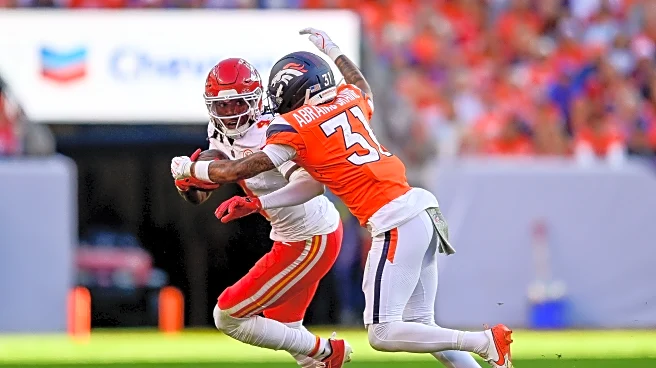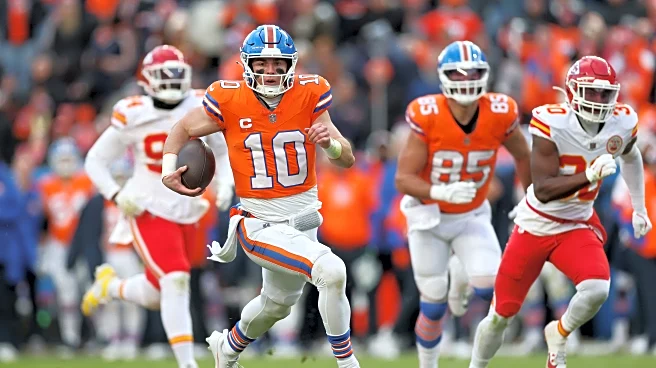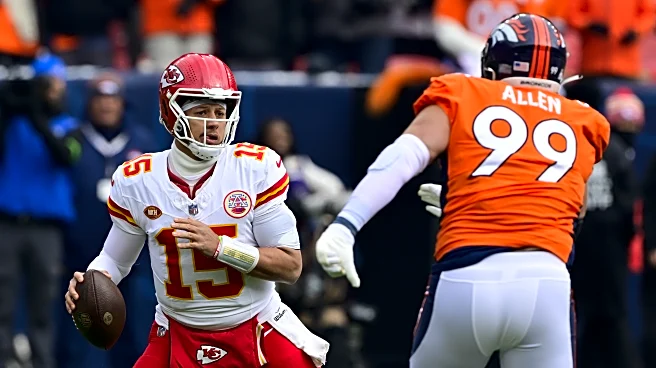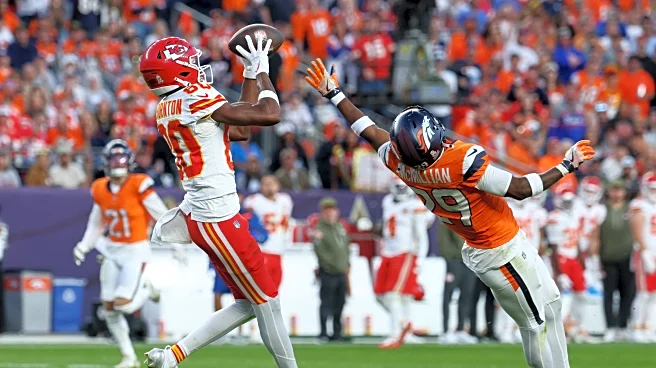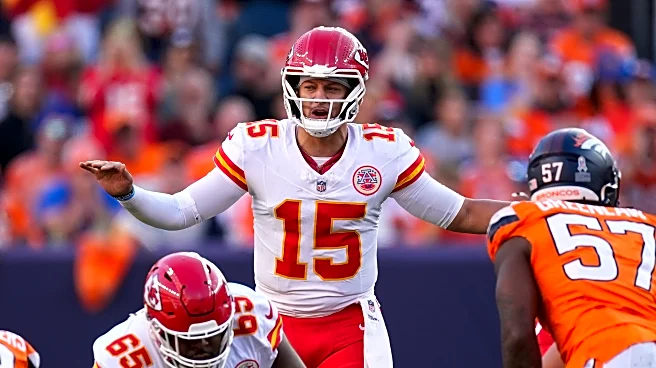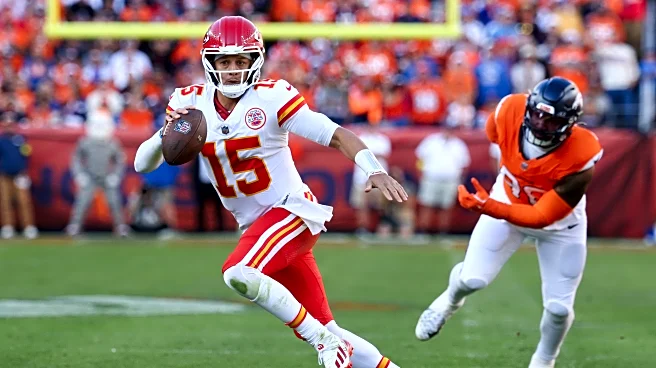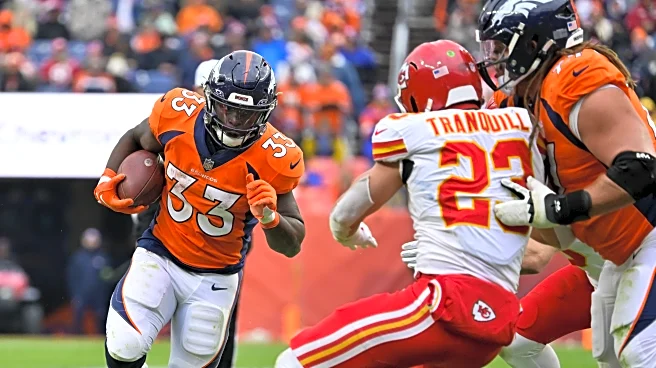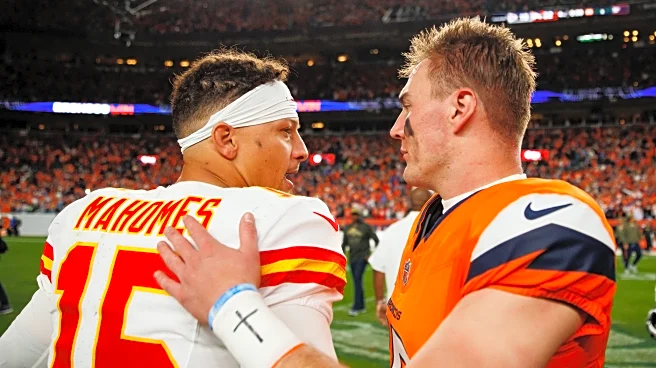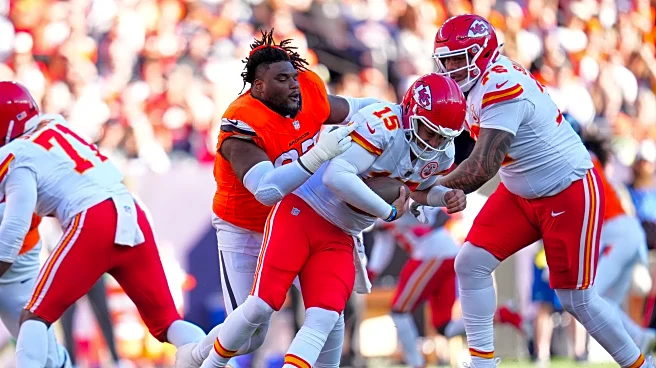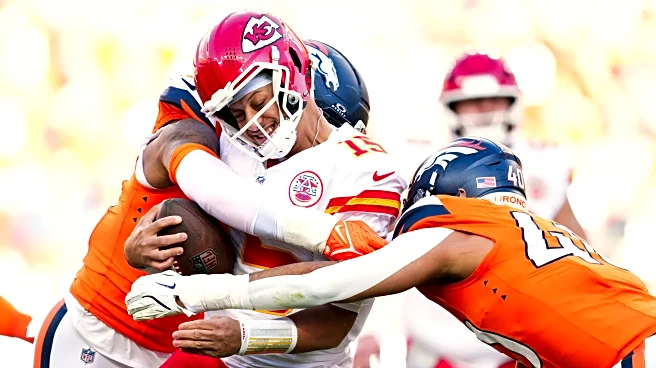During Sunday’s 22-19 loss to the Denver Broncos, the Kansas City Chiefs offense failed in many different ways. The run-pass splits, the lack of intermediate passing game and how it performed against the blitz were just some of the entries on a long list.
But one thing that really stood out was how poorly Kansas City did against Denver’s man coverage. While the Broncos are elite in man coverage, their star cornerback Patrick Surtain did not play. This should have been an opportunity for the Chiefs
— one of the league’s top offenses — to take advantage of lesser defensive backs, creating chunk gains with their fast receivers.
But that’s not what happened. Kansas City was flat-out exposed by the Denver secondary. The Chiefs’ receivers were unable to create separation on their own — and when the team called plays designed to beat man coverage, the receivers could only gain three or four yards. That created third-and-long situations that put the offense against Denver’s fierce pass rush and blitz packages.
How did this happen? Let’s take a look.
Film evaluation
While this play was kind of unique, it wasn’t a great sign for the rest of the game.
This is on the team’s first drive. Tight end Travis Kelce and wide receiver Rashee Rice run into each other on in-breaking routes. That eliminates both players from being options, which leaves wide receiver Hollywood Brown running an option route and wide receiver Xavier Worthy kind of filling space. Nothing gets open and Kansas City gets called for a hold.
One of my frustrations with how the Chiefs have built their wide receiver group is that they are terrible in contested-catch situations. The only wideout who can catch in traffic is Tyquan Thornton. Everyone else is bad at it.
In Sunday’s game, that showed up with Rice in two different instances.
On both of these plays, Rice is the back side receiver — or the X receiver. His job is to get off press coverage and win on these fade routes.
And on both plays, Rice creates no separation with his release or downfield — and then doesn’t bring in the contested catch. The second one is especially frustrating. Quarterback Patrick Mahomes lays out a great pass in a spot where Rice can get it with both hands, but he totally misses what should’ve been a catch.
A team’s best receiver has to bring in catches like this. Yes… Rice should have created more separation, but he was playing against good coverage. In those situations, he has to be able to gain position against the defender and bring in tough catches. That’s what the best receivers do. But against Denver, Rice wasn’t doing it.
The Chiefs have had this problem for several years. They don’t have a receiver who can align on the back side of a formation and beat man coverage. If that receiver is really good, the defense is forced to shade a safety over him, which removes a defender from the strong side of the coverage. But if they shade the safety to cover the strong side, then it’s a one-on-one for what’s typically the offense’s best receiver.
The Chiefs don’t have a wide receiver who can do that. This leaves the team relying on the 36-year-old Kelce to fill that role, but he hasn’t been good at it for years; he can no longer create separation versus cornerbacks.
Consider this play. The Chiefs run a three-level concept to the strong side with everyone flowing to the sideline. Nothing gets open — another problem — so when Mahomes looks to the back side, nothing is open. Kelce chips, so when the play breaks down, Mahomes has no one to target.
Here, Kansas City has a good play-call against man coverage. Worthy motions across the line of scrimmage to get open against man coverage on a stop route. But this forces Mahomes to immediately chuck this pass all the way to the sideline without really getting his feet into it. It’s so hard to do that it’s going to create errors. And when it works, it gets only seven yards.
Everything the Chiefs do to beat man coverage just feels hard.
On the positive side, Worthy and Kelce do a great job on these pivot routes to get open. Worthy, in particular, runs a filthy route that creates separation and moves the chains — and Kelce does as well.
But think about it from the defense’s point of view. You were beaten, but what was the cost? Five to seven yards? That won’t make you change what you’re doing — especially when you’re tackling well. So even when Kansas City could get good looks against Denver’s man coverage, it wasn’t squeezing juice from it.
The bottom line
The Chiefs’ receivers were exposed on Sunday. We’ve been told this was the deepest set of weapons Mahomes has had, but that’s just not true.
It’s incredibly frustrating that Kansas City has used its resources on receivers with redundant skill sets. None of them can win a contested catch or beat physical coverage. They all require role catering (or scheme) to create chances for them; none of them can do it themselves.
That’s just a hard way to live against any real defense.
The formula is out there against Kansas City right now. Against man coverage, the Chiefs are going to throw very short passes because their guys can’t create separation on their own. Head coach Andy Reid designs all his plays to go horizontally, so you don’t have to worry too much about losing downfield. As long as you tackle well, you’ll be fine.
Until the Chiefs’ receivers prove capable enough to beat tight coverage, this is going to be an existential problem for their offense.
